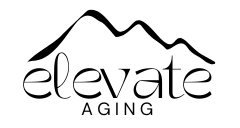"E"LEVATE - Exercise
Movement is Medicine. This phrase adorns the wall of our therapy gym at my workplace, emphasizing the transformative power of physical activity. Research has shown that exercise can be as effective as pharmaceutical interventions in alleviating symptoms of diseases such as heart disease and diabetes. It is a proven method for managing metabolic control, such as regulating blood sugar levels, reducing body fat, and supporting healthy cholesterol levels. Additionally, exercise helps to reduce age-associated inflammation, cellular senescence, and oxidative stress. Exercise can be graded, modified, and performed virtually anywhere.
Golf and yoga are two activities hope to maintain in my life over the coming decades. I find both to be simultaneously rewarding, challenging, and calming. While am not an expert in either, through self-direction and patience, I have come to rely on these forms of exercise not only as outlets for stress relief but also as means to improve cardiovascular health and overall strength. I began learning the game of golf at around the age of 50, during the pandemic. My son and I were novices but had the interest and time to explore, while my husband exhibited patience. I relish the challenge of striving for that perfect swing. Golf is excellent for engaging my core muscles, enhancing flexibility, with the added benefit of being outdoors. I never use a cart, so ensure I achieve my daily steps. There is immense satisfaction in acquiring a new skill. To clarify, I have not taken any formal lessons, I use pre-owned golf clubs, and I play on casual courses where I feel little pressure or self-consciousness. I encourage anyone interested in this sport to give it a try. Start with a lesson or go with friends to a par 3 course or an indoor simulator. There are numerous resources, including YouTube videos, books, and websites, for learning techniques.
Yoga and pilates are forms of exercise that I have been practicing for many years. The importance of stretching and maintaining flexibility is so integral to supporting balance, strength and range of motion. The right pose can release tension and alleviate pain. Yoga is great for regulating one’s autonomic nervous system, positively affecting heart rate, blood pressure and even digestion. WIth repetition your body will gain stability, improved posture and control will provide joint and back protection as well as lower your risk for injury. Particular emphasis should be placed on body alignment and employing good body mechanics throughout to ensure safety while optimizing mobility and function. Take the time to learn the proper techniques and then challenge yourself by holding positions longer each week. I’d also like to add that the benefits of pelvic floor strengthening for bladder support have been a huge bonus for me. To gain effective technique seek out a pelvic floor Physical Therapist in your area. A specialist is the best way to support essential functions like bladder and bowel control or pelvic pain. Use the links below for inspiration.
Pure-Flow-Home-Practice-1-Dynamic-Energising.pdf
Article on PubMed:
Effects of exercise on cellular and tissue aging | Agi
Where to start? Experiment with one of the many activities listed below and grade accordingly… alter frequency, intensity and duration as needed. Do your research, use good body mechanics and speak with your doctor if you have questions or medical concerns.
Learn and implement 5 yoga poses
Take a Yoga class
Learn and implement 5 pilate exercises
Take a Pilates class
Take a golf lesson
Find a golf simulator in your area and play with friends
Jump rope starts for 2 minutes and builds up to 5
Complete a circuit of burpees, mountain climbers and squats. Start with 10 each
run/walk combination: start with 15 minutes and build up to 30
Learn a dance step sequence. Search shuffle dance tutorial (YouTube)
Increase the daily number of steps. Aim for 6000, 8000, 10000
Learn Tai Chi. Start with a Google search, explore classes in your area
Cycling
Swimming. Take a class. Explore local fitness centers
Hiking. Explore a new park or region of the state
Run or walk up a hill or set of stairs at a local high school
Tennis or pickleball. Hit against a backboard; find a friend to play with. Take a lesson
Strength training with varying weight resistance. Search strength training for beginners (YouTube)
Modifications for older adults: chair exercises and stretching, incorporate core rotation and gentle cervical range of motion. Older adults struggle with posture and do not participate in as many activities that maximize their amplitude of movement. This results in increased rigidity and increased risk for falls. If they can do so safely, older adults should be encouraged to walk, even on uneven surfaces (outdoors and indoors). Encourage them to explore the need for an assistive device such as a walker, seeing a physical therapist is a great place to start if someone is seeing changes in gait or balance.
